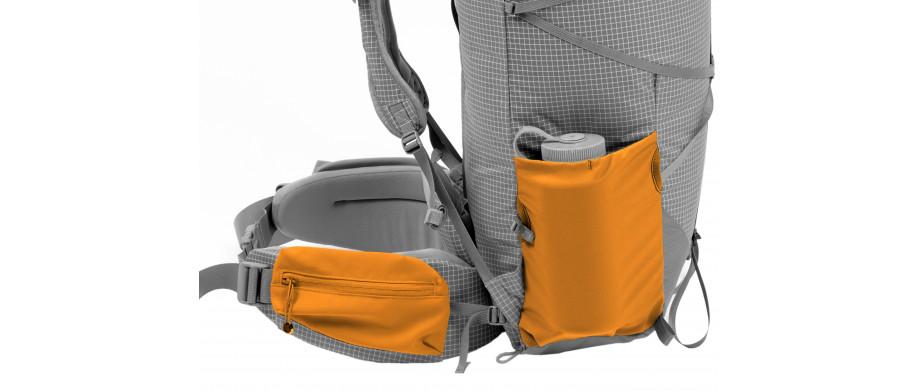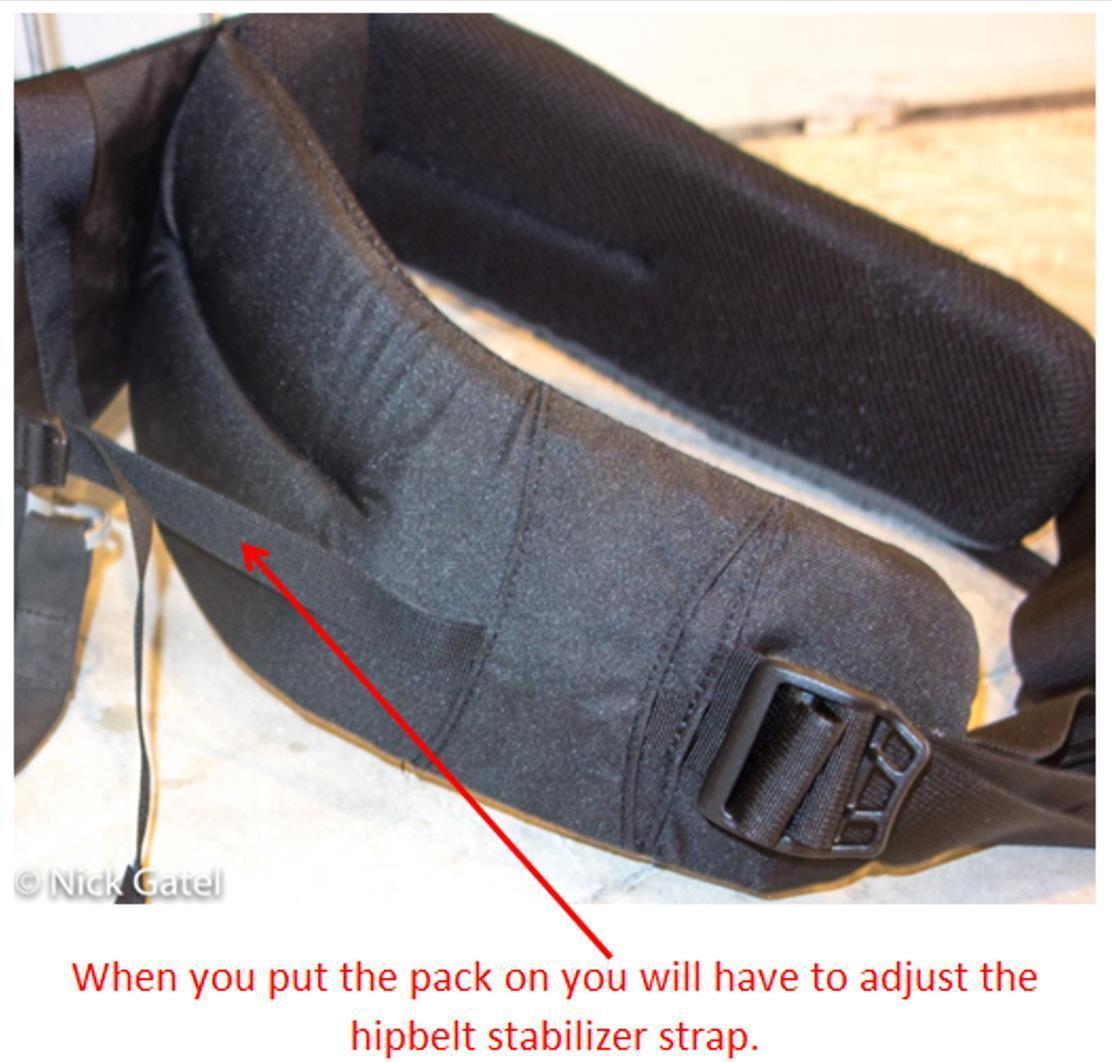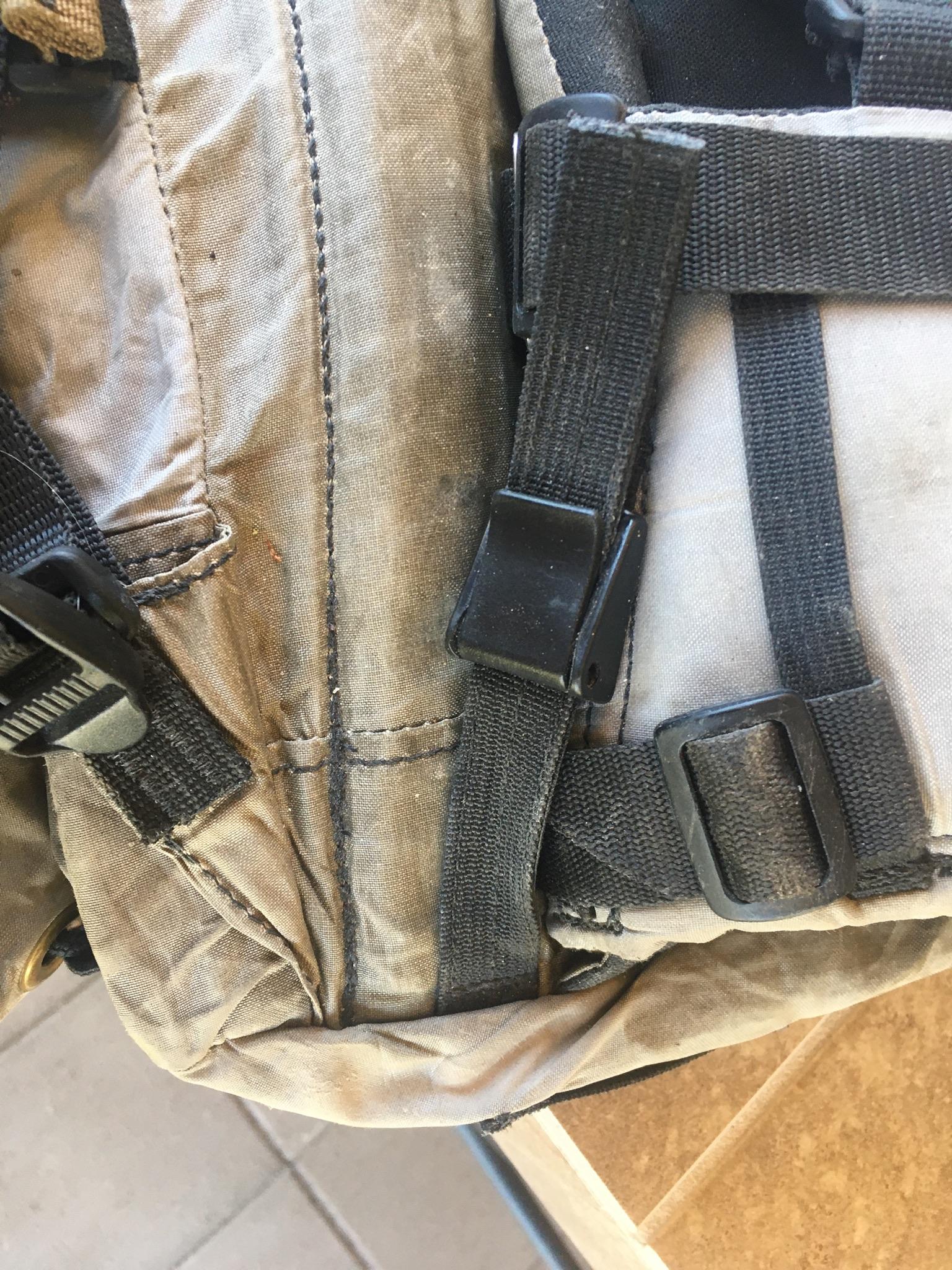Topic
Hip belt Stabilizer Strap
Forum Posting
A Membership is required to post in the forums. Login or become a member to post in the member forums!
Home › Forums › Gear Forums › Gear (General) › Hip belt Stabilizer Strap
- This topic has 14 replies, 10 voices, and was last updated 4 years, 7 months ago by
 Dave B.
Dave B.
-
AuthorPosts
-
Jul 15, 2020 at 8:57 pm #3664608
My pack’s hipbelt has a stabilizer strap. It’s an internal frame pack (Elemental Horizons Aquilo). But I can’t tell any difference whether I tighten this strap or leave it loose. I’m thinking about just cutting it off. Do others use their hipbelt stabilizer strap or notice a benefit? Is there some situation where it’s beneficial?
On an external frame pack I had with 40-50lb loads, I could notice the impact of tightening the hipbelt stabilizer strap, but I’m wondering if they’re defunct on internal frames or with lighter loads (less than 30-35 lbs).
Jul 16, 2020 at 8:45 am #3664657I have no idea what a hipbelt stabilizer strap looks like and my imagination fails me. Got a pic?
Jul 16, 2020 at 9:54 am #3664669There’s a description here:
http://popupbackpacker.com/update-your-old-kelty-external-frame-backpack/
They’re also visible on the Exped Lightning 60, that little strap to the right of the orange hipbelt pocket:

http://www.exped.com/usa/en/product-category/backpacks/lightning-60-black#prettyPhoto
Jul 16, 2020 at 10:38 am #3664671That strap makes a huge difference on ULA packs. Maybe the design is different? It feels like it compresses the load right into your lumbar region.
Jul 16, 2020 at 12:52 pm #3664691The hip belt stabilizer strap has two theoretical functions: one to minimize the side to side movement while walking, the other to help transfer/distribute weight from the bottom of the pack to the hip belt.
How, and if, this works is determined by the frame design/construction and location, the hip belt design, and hip belt attachment points.
Below is an example on one of my Kelty external frame packs. You can read more about this here. This pack is an early Kelty pack that originally came with a web belt. In the ‘80s Kelty began to use larger foam padded belts with stabilizer straps and I adapted a new model belt to the old pack.

Because of the design of the belt, where there is a lot of open space behind the belt, stabilizer straps are necessary. The adjustment steps are to tighten the waist belt front buckle and then adjust the stabilizer strap.The problem with this design is the stabilizer strap is perpendicular to the frame, so it can’t really distribute weight from the bottom of the pack to the hip belt. This design where the stabilizer strap is parallel to the wrap of the hip belt seems to be common on most packs, to include internal frames. With internals, the side to side stabilization isn’t that important because of how the packs “hug” the body. Actually, on most lighter packs they’re just extra weight.
With an internal, what you really want is a strap from the bottom of each frame stay to the hip belt. This way, the bottom corners at the very bottom of the frame connect to the hip belt.
So let’s look at a McHale pack.
With this design, the lumbar pad is as wide as the space between the two internal frame stays.

The stabilizer straps attach to the bottom of the internal frame sleeves — the bottom, corner to corner, so the weight at the bottom of the pack can be distributed to the hip belt. Also, the stabilizer strap is perpendicular to the hip belt.


Unlike the typical stabilizer strap that is designed to be adjusted every time the pack is put on, McHale’s design is a one time event when the hip belt is attached to the pack.
Add to this, McHale’s hip belt is constructed with high quality foam, uses two front buckles, and the inside of the belt (along with the lumbar pad) use a non-slippery fabric. So the hip belt is an integrated system. Good pack design starts with the hip belt. It seems that many packs offered today view the hip belt as an add-on item at the end of the design process.
Jul 16, 2020 at 3:56 pm #3664707In my experience, hip belt stabilizer straps are needed always, sometimes, or never, depending on backpack design and load (heavy => desirable), but not trail conditions. My current HMG Windrider 2400 doesn’t have those straps, and it’s the most comfortable pack I’ve used for loads less than 35 pounds. I don’t plan on carrying loads higher than that in the foreseeable future.
But on other packs, especially with heavy loads, I found those straps helpful – like you did on an external frame pack.
If you have enough experience with a pack to know that stabilizer straps aren’t helping with the loads you plan to carry, cut the straps off. You’ll be glad you did.
— Rex
Jul 16, 2020 at 5:59 pm #3664730Ah, straps (plural). I’ve always called those sway bars because their primary effect seems to be limiting side sway by the pack. That said, I rarely think to check them and often find them loose after never noticing any discomfort. Cinching them up does seem to make things a little more stable but the effect must be small because I never notice when they go loose again.
Jul 16, 2020 at 8:31 pm #3664840@rex: HMG packs used to have the hipbelt stabilizer straps too, but it looks like they’ve gotten rid of them.
On my Aquilo pack, the frame slots directly into the hipbelt, providing good load transfer. The frame is also very securely connected to rest of the pack. Due to this and the narrow pack body, I think the pack has all the load stabilization needed without the hipbelt stabilizer straps. So I’m inclined to cut them off. I’ll play around with them again on a couple more hikes.
Jul 16, 2020 at 9:15 pm #3664843John,
Weight is a big factor too. More weight often means greater need for load lifters or belt stabilizers. Again, design also plays a big factor. Why remove them? How much do theY weigh in comparison to the total weight of the pack itself?
Jul 17, 2020 at 1:02 pm #3664925Early Gregory packs had straps running from the hipbelt straight back to the pack bag. This pulled a contoured wing of the pack bag toward the hip belt. This made the back panel of the pack contour around the hipbelt some. (This contour was different from the Lowe Alpine pack that were more like rectangular blocks.). Without these side straps the side of the pack would be flopping around loosely. It was partially load bearing and were supposed to be adjusted often. Sometimes people over tightened them and forgot about them. This caused the hipbelt to be pulled away from the hip and toward the pack. With less contact, the hipbelt would slip. Similarly, you can make the load lifters pull your shoulder straps too far off the top of your shoulders by over tightening them.
So I’d try the pack with the straps very loose and see what happens. And try adjusting them often to see if they can be made useful in adjusting the pack fit and hipbelt fit.
Scott
Jul 17, 2020 at 1:13 pm #3664931Early Gregory packs had straps running from the hipbelt straight back to the pack bag. This pulled a contoured wing of the pack bag toward the hip belt. This made the back panel of the pack contour around the hipbelt some. (This contour was different from the Lowe Alpine pack that were more like rectangular blocks.).
Gregory has had all kinds of suspension systems over the years, IIRC . . . aluminum stays, carbon stays, frame sheets, etc. So each work a little bit differently. One thing I have noticed over the years is many pack manufactures don’t do a good job or explaining how things work, or customers don’t read and study the instructions.
I know how my external packs work because I’ve taken them apart. The same with my McHales — I’ve taken them apart to see how they work — even though Dan McHale includes an instructional DVD with all his packs — it helps to learn, understand, and remember by taking things apart and putting them pack together.
I had a Gregory Denali Pro for a while, which was over-engineered and quite complicated. So a bit of learning curve for a user.
Jul 18, 2020 at 12:00 pm #3665080With some packs the hip belt stabilizer is not functional unless the pack’s bottom is fully (tightly) loaded.
The function of the hip belt stabilizer is analogous to lift straps i.e to pull the pack closer to your body and prevent swaying.
To me 80% of my backpacking requires the hip belt stabilizers be relatively loose so my hips can move independently of my pack.
Jul 18, 2020 at 9:58 pm #3665217My experience – with the packs that I make myself – has been that I want them for skiing, I don’t need them otherwise. So my winter/ski pack has them, my other packs don’t. The back of my hipbelts are attached for about 8″ at the bottom; that works well for me (30-32″ waist). larger folks, larger packs – you might want the belt attached over a wider area, or you might want teh straps to cut down on sway/flex. I did various experiments when I was developing my pack designs to work out how much of the belt to sew to the pack for a good balance of solid attachment and freedom of movement.
Jul 19, 2020 at 2:17 am #3665226The ratio between your back width and the pack width (when loaded) will give you a sway factor. The hip belt straps are to remove the sway. I had an old Denali that did that. Trouble was I could never make it comfortable at 45 pounds. At 6 pounds, it certainly was not worth it just for the sway stabilizers.
Jul 20, 2020 at 12:14 pm #3665618Nick that was a very good explanation of design. I just got my first McHale pack and coming from a HMG 4400 the hip belt alone made a 100% difference with 40 pounds. The extra weight was irrelevant to the ability not to get crushed. Just finished 65 miles in Sierras on and off trail. After understanding the engineering of Dan’s packs, i would think that the stabilizer strap of the other packs shown in the thread would improperly effect the distribution was weight around the hip.
-
AuthorPosts
- You must be logged in to reply to this topic.
Forum Posting
A Membership is required to post in the forums. Login or become a member to post in the member forums!
Trail Days Online! 2025 is this week:
Thursday, February 27 through Saturday, March 1 - Registration is Free.
Our Community Posts are Moderated
Backpacking Light community posts are moderated and here to foster helpful and positive discussions about lightweight backpacking. Please be mindful of our values and boundaries and review our Community Guidelines prior to posting.
Get the Newsletter
Gear Research & Discovery Tools
- Browse our curated Gear Shop
- See the latest Gear Deals and Sales
- Our Recommendations
- Search for Gear on Sale with the Gear Finder
- Used Gear Swap
- Member Gear Reviews and BPL Gear Review Articles
- Browse by Gear Type or Brand.








